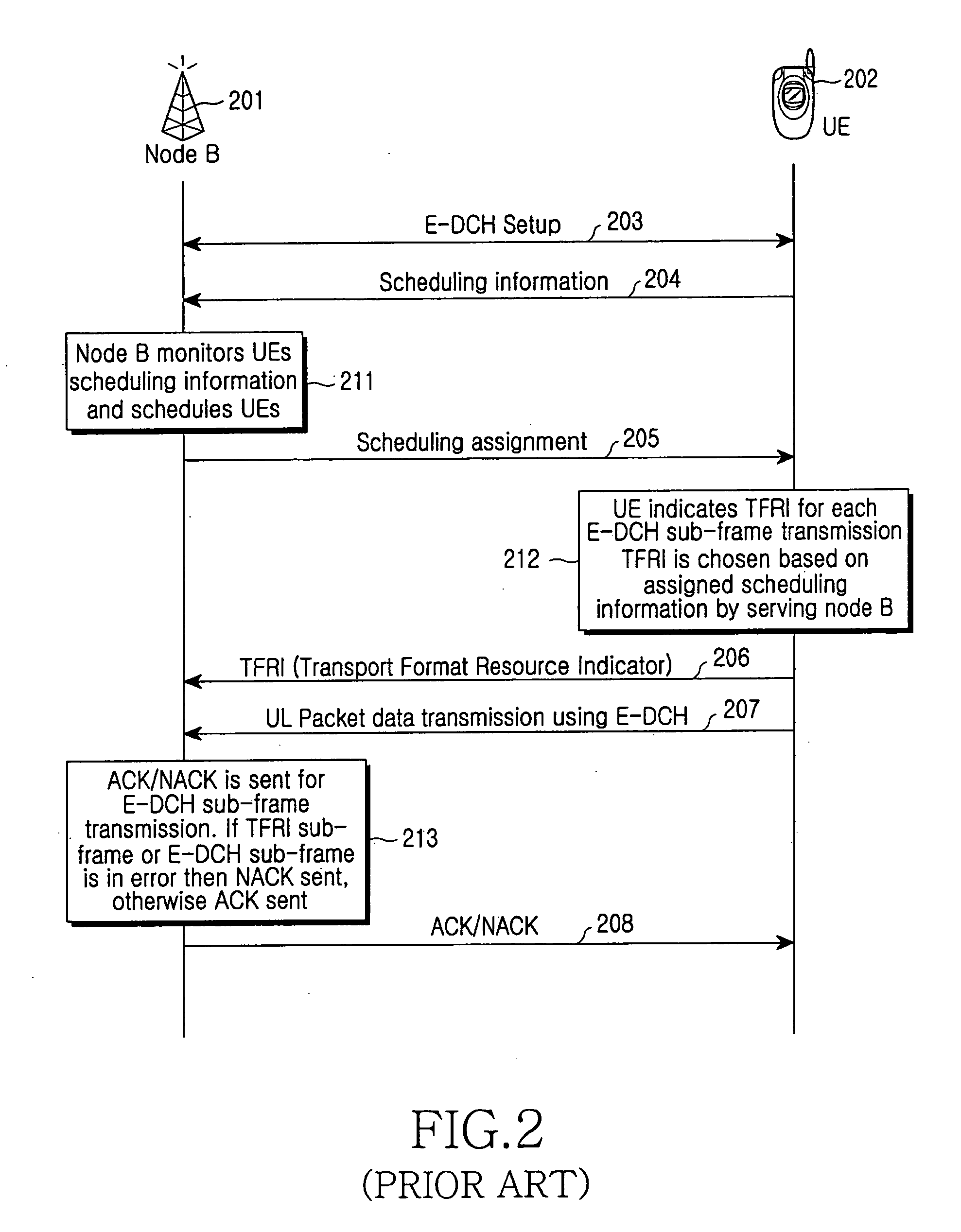Method and apparatus for changing TTI based on a HARQ process in an enhanced uplink dedicated channel
a dedicated channel and process technology, applied in data switching networks, instruments, frequency-division multiplexes, etc., can solve the problems of reducing the probability of error occurrence and increasing the peak to average ratio, so as to enhance the system performance and enhance the performance of uplink packet transmission
- Summary
- Abstract
- Description
- Claims
- Application Information
AI Technical Summary
Benefits of technology
Problems solved by technology
Method used
Image
Examples
first embodiment
[0055] According to the first embodiment of the present invention, a method of retransmitting the data that remains in a soft buffer using the changed TTI if the TTI is changed during the HARQ operation is provided.
[0056] Hereinafter, the problems to be solved when the TTI is changed will be explained with reference to FIGS. 4A and 4B.
[0057]FIG. 4aA is a view illustrating the case that the TTI is changed from 10 ms TTI to 2 ms TTI. Referring to FIG. 4A, in the UE, the TTI is changed in a frame 405, and in the Node B, the TTI is changed in a frame 409. In this case, the respective states of the HARQ process are as follows. Just before the TTI is changed, it is possible to receive the ACK / NACK response in the case of the HARQ process #1 401, but it is impossible to receive the ACK / NACK signal before the time point of the next process transmission in the case of the HARQ processes #2 and #3 and 403 and 404, respectively. In the Node B, the ACK / NACK signal of #3 should also be transmi...
second embodiment
[0081] According to the second embodiment of the present invention, a method of changing the TTI based on the HARQ result of the previous data before changing the TTI, i.e., a method of changing the TTI after completing the HARQ procedure of the data transmitted using the previous TTI, is proposed. In the case of applying this method, the TTI change is not performed at the time point when TTI change information required by the actual upper signaling is received, but is performed at the time point when the HARQ processes of the corresponding data of the previous TTI is completed.
[0082] Hereinafter, the TTI changing method by applying the method 2 according to the second embodiment of the present invention will be explained. In the second embodiment, the time point of the new TTI change is calculated in consideration of the time point when the TTI change information transferred by the signaling of the actual upper layer is received and the HARQ process before the TTI is changed. That...
third embodiment
[0101] Method 3 is a method of using the TTI changing method in a different manner according to the conditions.
[0102] According to the third embodiment of the present invention, a method of changing the TTI in a direction in which a more efficient shift can be performed in consideration of the delay conditions of the two embodiments as described above is provided. As described in the conventional method, It is efficient that the short TTI is used to support the service that is sensitive to delay, and the long TTI is used to support the service that is less sensitive to delay. Accordingly, it is preferable that in the case of changing the long TTI to the short TTI, the change to the short TTI is immediately performed using the method 1, while in the case of changing the short TTI to the long TTI, the change to the long TTI is performed after the data in error is retransmitted using the method 2.
PUM
 Login to View More
Login to View More Abstract
Description
Claims
Application Information
 Login to View More
Login to View More - R&D
- Intellectual Property
- Life Sciences
- Materials
- Tech Scout
- Unparalleled Data Quality
- Higher Quality Content
- 60% Fewer Hallucinations
Browse by: Latest US Patents, China's latest patents, Technical Efficacy Thesaurus, Application Domain, Technology Topic, Popular Technical Reports.
© 2025 PatSnap. All rights reserved.Legal|Privacy policy|Modern Slavery Act Transparency Statement|Sitemap|About US| Contact US: help@patsnap.com



